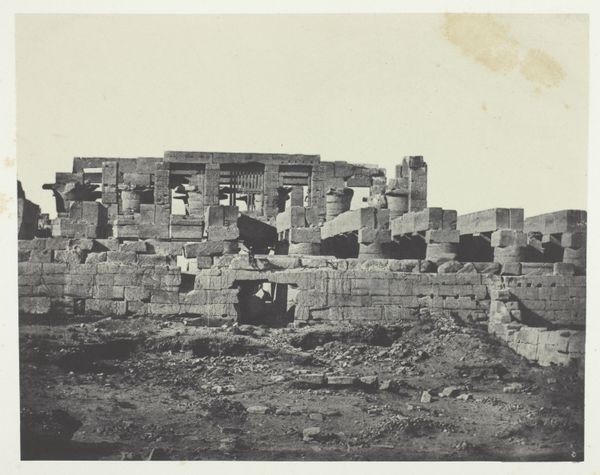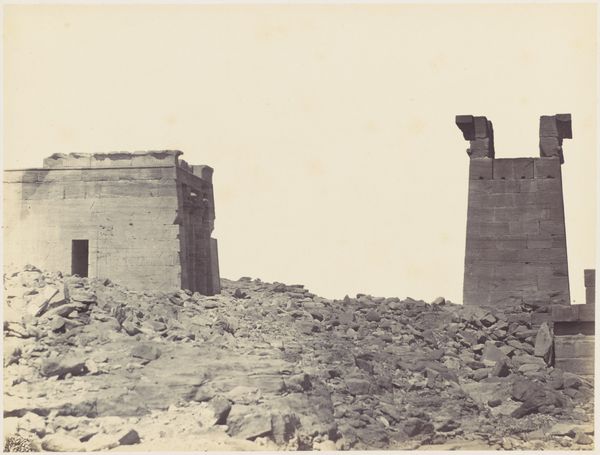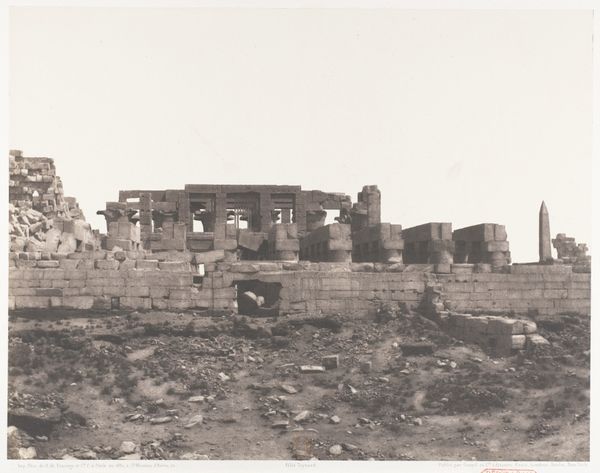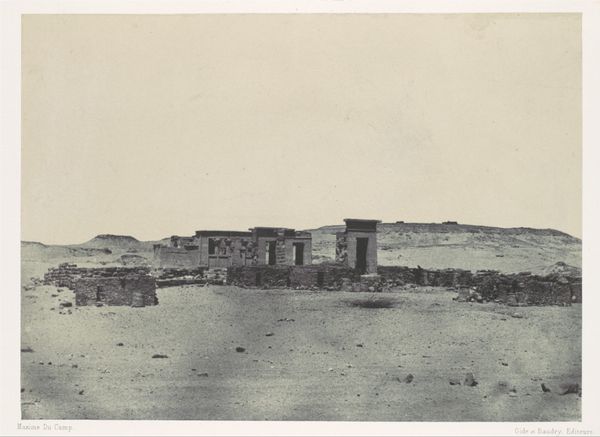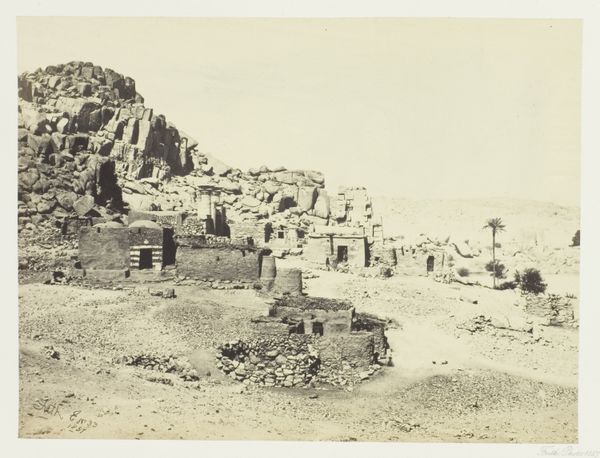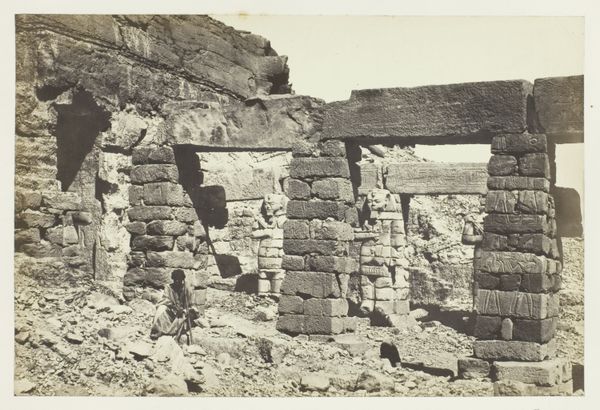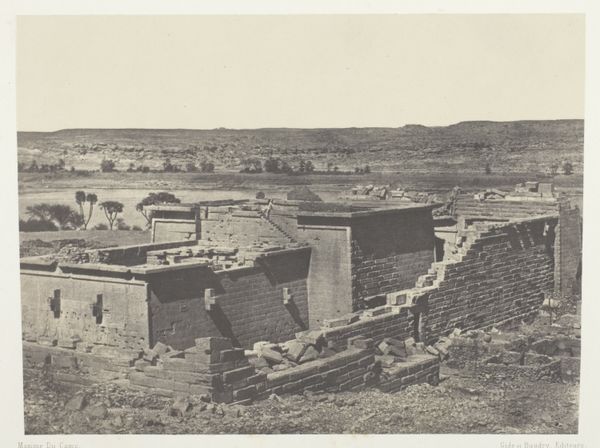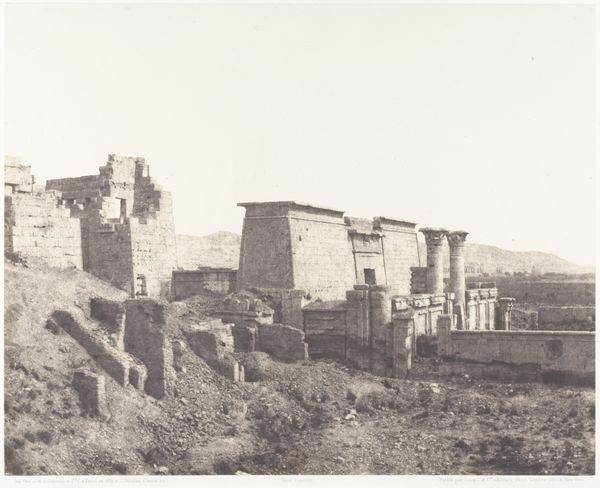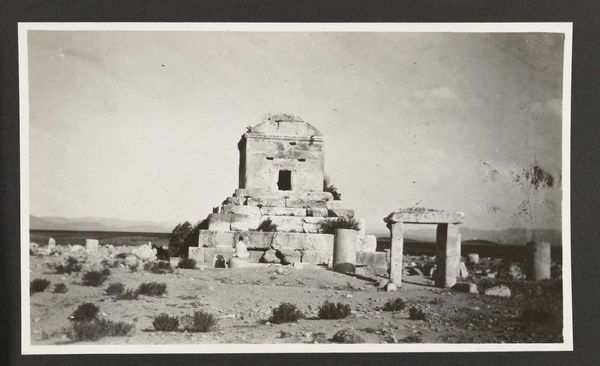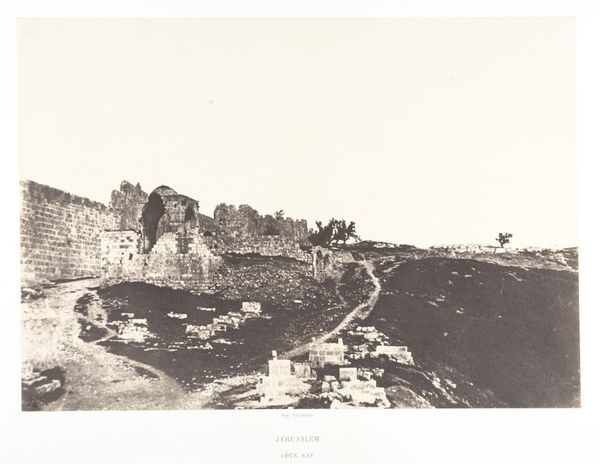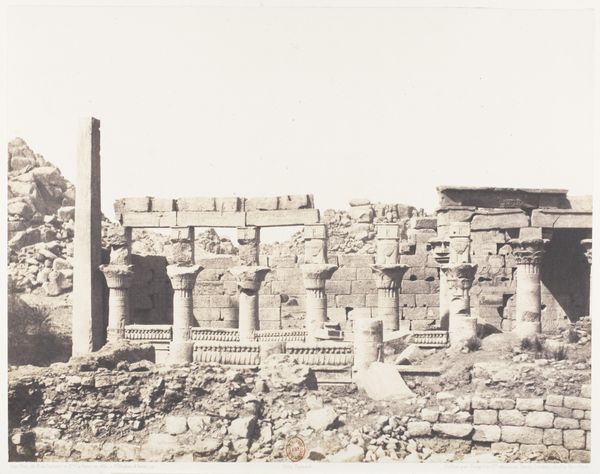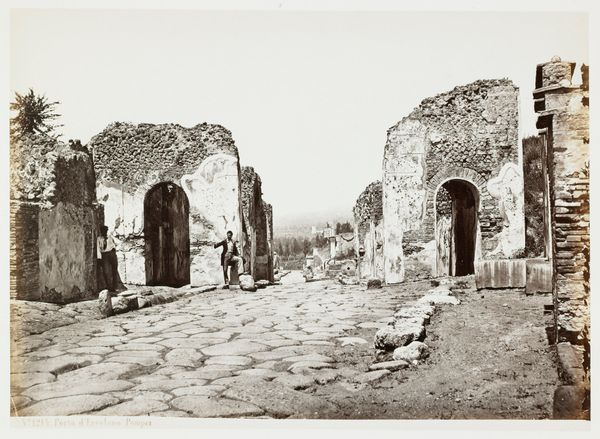
Kalabcheh (Talmis), Ruines du temple - Façade et Mur d'Enceinte 1851 - 1852
0:00
0:00
print, daguerreotype, photography, architecture
# print
#
landscape
#
daguerreotype
#
ancient-egyptian-art
#
outdoor photography
#
photography
#
ancient-mediterranean
#
arch
#
architecture
Dimensions: 23.6 x 30.3 cm. (9 5/16 x 11 15/16 in.)
Copyright: Public Domain
Curator: We’re looking at Fèlix Teynard's "Kalabcheh (Talmis), Ruines du temple - Façade et Mur d'Enceinte" from 1851-1852. This daguerreotype, now held at the Metropolitan Museum of Art, captures a striking architectural ruin. What's your first take? Editor: Stark. Monumental yet decaying. The severe tonal range focuses the gaze on the ravaged stonework; the image plane is sharply defined to give way to this sense of ruin. There’s a powerful interplay between the solid forms of the architecture and the dissolution into rubble at the base. Curator: The crumbling facade does speak volumes, doesn't it? This temple was built during the Roman occupation of Egypt, incorporating pharaonic and Graeco-Roman religious iconography. Its decline tells a long story of shifting power and cultural transformation. Editor: And look at the geometric rigor. See the clear demarcation in planes and shadows—Teynard organizes it to present the ruins with a sense of structure despite its desolation. One almost senses a platonic form struggling to maintain its ideal form in the face of entropic forces. Curator: I find it poignant how such diverse symbols – Roman, Greek, Egyptian – are eroded together here. The building seems to be dissolving into a single layer of meaning about time and loss, and perhaps human transience when viewed through the eyes of the divine. Editor: That layering of cultural and temporal residue brings up an important idea: this photograph doesn’t just record the ruin, but subtly presents the layering and structural properties that have been essential for it to become such a haunting document. Curator: The photograph freezes the ruins and layers multiple timelines for us to decipher. It allows for the building’s layers of symbolism, that still permeate the stone, to exist now within yet another culture, to speak yet another symbolic truth. Editor: Agreed. Its strength lies precisely in how its formal qualities echo the monumentality and complex layers that are captured and brought forward into present consciousness.
Comments
No comments
Be the first to comment and join the conversation on the ultimate creative platform.
